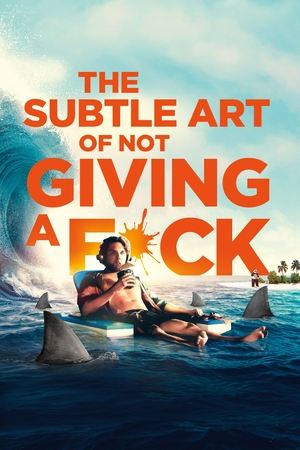The Subtle Art of Not Giving a #@%!: A Thought-Provoking Documentary
The Subtle Art of Not Giving a #@%! is an eye-catching documentary that delves into the profound question of what truly matters in life. Based on the book by Mark Manson, this documentary takes viewers on a journey through Manson’s life, interspersed with analogies, anecdotes, and thought-provoking life lessons. Through the exploration of unconventional wisdom, counterintuitive philosophies, and an analysis of societal behavior, Manson aims to provide a different perspective on self-help and guide individuals towards what truly matters in life.
A Unique Approach and Engaging Narration
While I haven’t personally read the book, it appears that much of the material, advice, and stories in the documentary are derived from Manson’s source material. However, the film utilizes the visual medium to its advantage, with Manson’s engaging narration accompanied by a variety of stock footage, reenactments, and animated segments. These elements effectively enhance the emotional and intellectual impact of Manson’s words, making the documentary a valuable companion to the book.
An Unconventional Structure
The structure of The Subtle Art of Not Giving a #@%! may not follow a strict narrative flow, and some of the points and anecdotes feel scattered and disjointed. However, this unconventional approach also allows for a fresh perspective on recurring ideas, providing opportunities for viewers to revisit and reinterpret them. While the documentary may lack seamless cohesion, it still manages to convey compelling insights.
The Power of Manson’s Words
Mark Manson’s words are bold, direct, and at times, harsh. However, they serve as a poignant exploration of the interplay between human psychology and societal expectations. Manson challenges conventional beliefs by stating that individuals are not inherently special and that the pursuit of happiness through superficial means is ultimately futile. He dismantles the notion that money or external achievements can bring lasting happiness, urging viewers to find value and contentment within themselves.
Embracing Imperfections and Rejecting Entitlement
One of the core messages of The Subtle Art of Not Giving a #@%! lies in accepting imperfections and rejecting entitled thinking. Manson emphasizes that it is not only acceptable but also beneficial to experience moments of unhappiness and imperfection. The documentary exposes the illusion perpetuated by social media, where only the highlights of others’ lives are showcased, leaving individuals feeling inadequate. Manson reminds viewers that even those who appear successful face their own dissatisfaction.
Responsibility in the Face of Pain
An intriguing aspect of Manson’s philosophy is the concept of taking responsibility for one’s pain, even when not at fault. He encourages viewers to consider how they handle suffering and the impact it has on their decisions. By empowering individuals to recognize their ability to shape their responses to adversity, Manson prompts introspection and personal growth.
A Personal Reflection
The Subtle Art of Not Giving a #@%! resonates with my own thoughts and experiences. It compels me to reevaluate my pursuit of validation and recognition, reminding me of the insignificance of trivial matters in the grand scheme of life. The documentary serves as a wake-up call, urging individuals to redirect their focus towards what truly matters.
A Refreshing Perspective
Despite its occasional cinematic limitations and lack of narrative focus, The Subtle Art of Not Giving a #@%! delivers its message effectively, offering viewers a new perspective on life. While it may not radically transform individual outlooks, the documentary has the potential to prompt introspection and guide individuals towards a more fulfilling existence.
Conclusion
The Subtle Art of Not Giving a #@%! transcends its provocative title, presenting a compelling exploration of what truly matters in life. Mark Manson’s candid and thought-provoking insights challenge societal norms and beliefs, prompting viewers to question their own pursuit of happiness. While the documentary may have its shortcomings in terms of structure and cinematic techniques, its core message remains invaluable.
FAQs
1. Is The Subtle Art of Not Giving a #@%! suitable for all audiences?
The Subtle Art of Not Giving a #@%! is intended for a wide audience, including high school students and above. However, parental guidance is advised due to some strong language and mature themes.
2. How does The Subtle Art of Not Giving a #@%! differ from other self-help documentaries?
This documentary offers a fresh perspective by presenting counterintuitive philosophies and exploring into the psychology behind society’s behaviors. It encourages viewers to challenge conventional wisdom and focus on what truly matters in life.
3. Can The Subtle Art of Not Giving a #@%! change the way I perceive success and happiness?
Absolutely. Mark Manson’s straightforward and introspective approach prompts viewers to reevaluate their understanding of success and happiness. It emphasizes the importance of finding intrinsic value and joy rather than relying on external validations.
4. Is it necessary to read the book before watching the documentary?
No, it is not necessary to read the book prior to watching the documentary. However, reading the book may provide a more comprehensive and detailed exploration of the ideas presented in the film.
5. How can I apply the teachings of The Subtle Art of Not Giving a #@%! to my daily life?
The documentary encourages self-reflection and self-awareness. By embracing imperfections, rejecting entitlement, and taking responsibility for one’s pain, viewers can endeavor to live a more fulfilling and authentic life. It is important to assess personal values and focus on what truly matters, letting go of societal pressures and unnecessary distractions.


